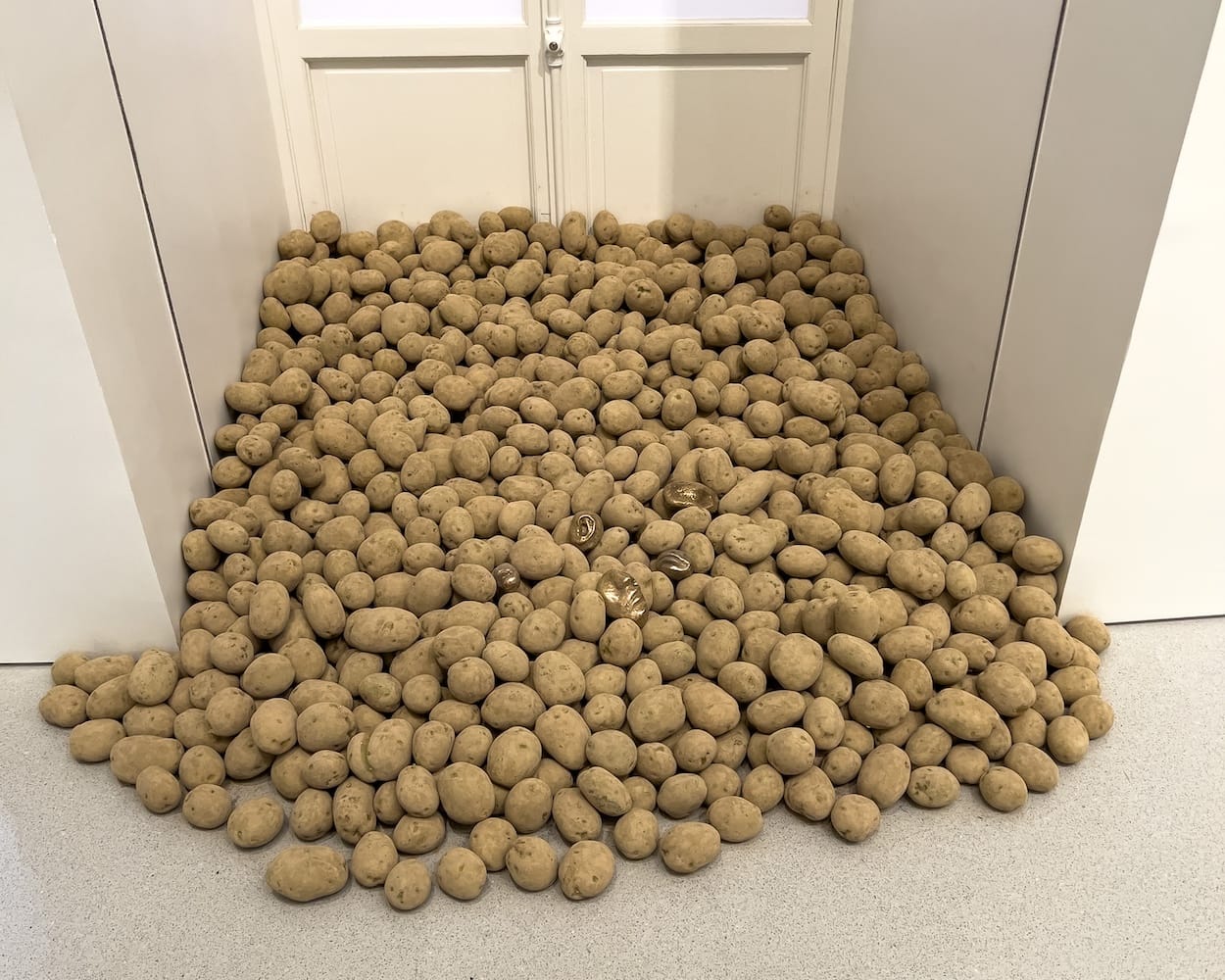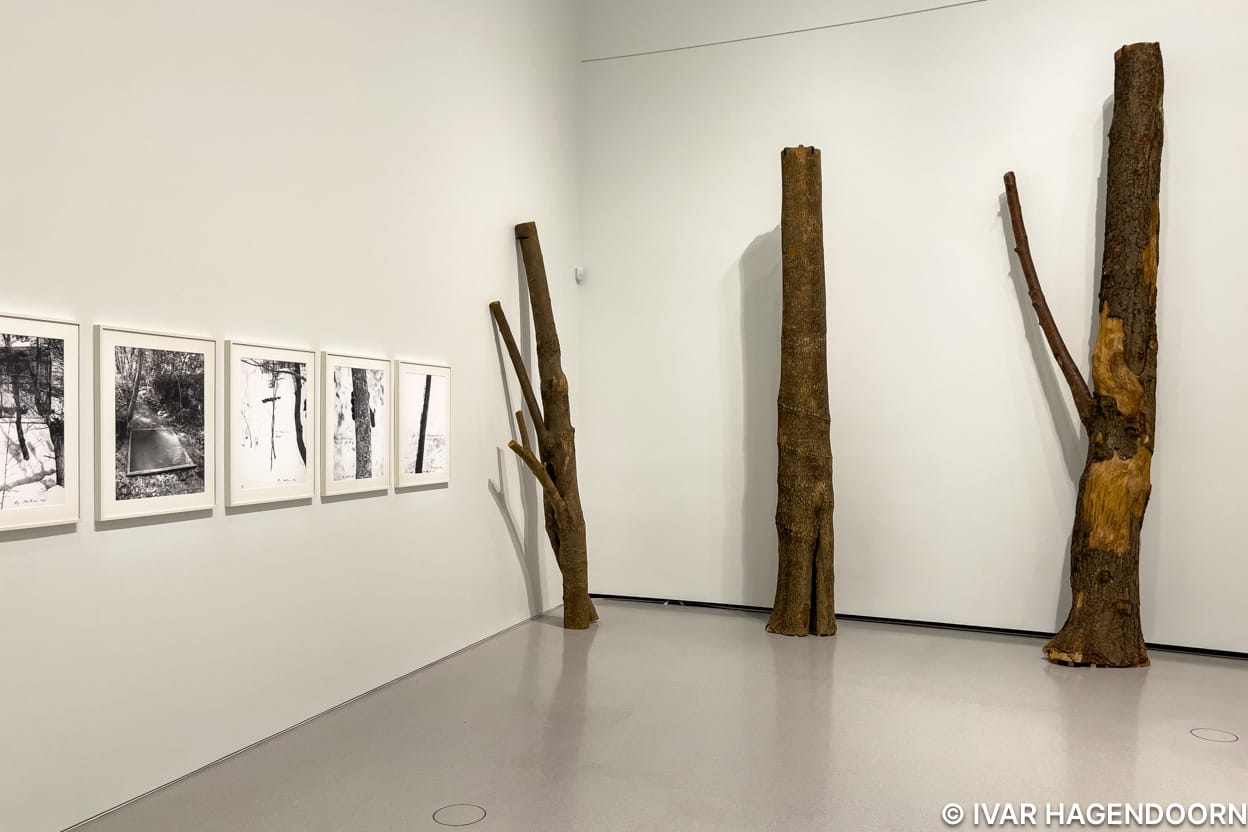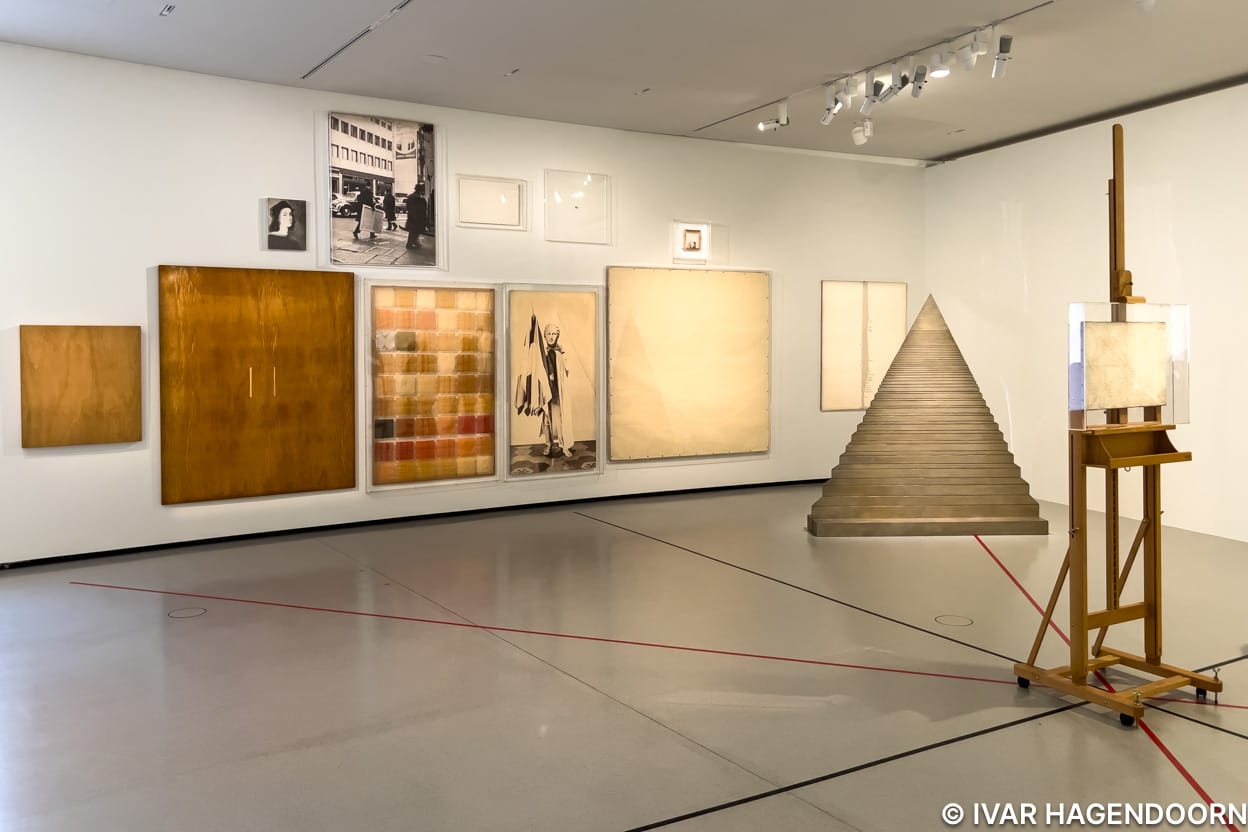
The Bourse de Commerce currently hosts a major exhibition which celebrates Arte Povera in all its diversity and wittiness. The term Arte Povera was famously coined in 1967 by the Italian art critic Germano Celant to describe the work of a number of Italian artists, including Luciano Fabro, Mario Merz, Giovanni Anselmo and Giuseppe Penone, who, independently, created works using raw and industrial materials such as wood, iron, coal, concrete, soil, raw wool, jute, coffee and neon tubes. Although “povera” is commonly translated as “poor” Celant used the term in the sense of pure or humble.
Nowadays Arte Povera is mostly remembered for its use of materials, while the ideology behind the works has been largely forgotten. The Arte Povera artists had strong ideas about the nature and politics of art. They were critical of consumer society and the ecological destruction brought about by industrialization and believed in the disruptive power of art to bring about social change. They longed for a more authentic form of art that spoke directly to the people and championed not only inexpensive materials but also artisanal ways of making.
The movement may have been called Arte Povera, but the artists did not take a vow of poverty. And while they rejected the commercialized art world they didn’t object to selling their work. From the beginning there was a market for Arte Povera and the artworks found their way into museums and private collections.
Two years ago I saw a wonderful installation of Arte Povera works from the collection of the Kröller-Müller Museum in the Netherlands. I was lucky to visit at an early hour on a quiet day so I had the entire room to myself. I had no such luck when I visited the Arte Povera exhibition at the Bourse de Commerce.
Scattered around the floor of the rotunda of the Bourse de Commerce are a number of works which serve as a joyful introduction to Arte Povera: a bed of coal by Jannis Kounellis, a heap of discarded clothes by Michelangelo Pistoletto, a glass iglo by Mario Merz, a machine gun by Pino Pascali, a sculpted tree by Giuseppe Penone and a marble sculpture of a person lying underneath a sheet ("Lo Spirito" by Luciano Fabro). Unfortunately you are not allowed to freely wander around the artworks. A fence keeps visitors at a distance. Elsewhere demarcation lines and security cameras prevent visitors from getting too close to the artworks. While understandable, given the number of visitors, including families with small children, and the market/insurance value of the works on show, it does go against the intention of the artists, who wanted their works to be experienced as directly as possible.
The galleries on the ground floor and upstairs are dedicated to individual artists. They show that there is more to Arte Povera than inexpensive raw materials. I particularly liked Giuseppe Penone’s tree sculptures.


I enjoyed seeing a large selection of Arte Povera works, but I believe these works benefit from a more serene setting, such as at the Kröller-Müller Museum. Apart from that the Kröller-Müller Museum and the Stedelijk Museum Amsterdam have a better collection of Arte Povera. Pinault was late to start collecting and he is only able to purchase works that come onto the market. Most of the better works were acquired by museums in the 1970s and 80s. Art galleries then and now like to reserve their best works for prestigious museums, because that increases the market value of an artist. If only the Kröller-Müller Museum would organize an exhibition bringing together all Arte Povera works from Dutch collections. That would be a magnificent exhibition.
Arte Povera is at the Bourse de Commerce in Paris through 20 January 2025.